Overview
The article titled "10 Examples of Stakeholder Register in Project Management" serves to illustrate the diverse applications of stakeholder registers across various organizations and projects. It provides detailed descriptions of strategies employed by prominent entities such as NASA, Walmart, and the Mayo Clinic. By emphasizing the critical importance of identifying participants, establishing effective communication plans, and integrating robust feedback mechanisms, the article underscores how these practices enhance stakeholder engagement and drive project success.
Introduction
Understanding the intricate web of relationships between various parties is crucial for successful project management. A stakeholder register serves as a vital tool for organizations, enabling them to identify, engage, and manage the interests of all involved parties effectively.
However, the challenge remains: how can businesses harness this tool to not only streamline their processes but also foster genuine collaboration among stakeholders?
This article delves into ten compelling examples of stakeholder registers across diverse sectors, offering insights into strategies that can enhance engagement and drive project success.
Transform Your Small/ Medium Business: Stakeholder Register Implementation Strategies
-
Identify Interested Parties: Start by compiling a comprehensive list of potential interested parties, including employees, customers, suppliers, and investors. Recognizing your interested parties is essential for successful engagement and lays the groundwork for building robust relationships. At Transform Your Small/Medium Business, we initiate this process with an extensive business evaluation to align key participants and gain insights that extend beyond mere figures.
-
Evaluate Influence of Interested Parties: Assess the impact and interest levels of each participant. This analysis highlights involvement initiatives based on the influence of interested parties, allowing you to focus on those who can significantly affect your business outcomes. Research indicates that 306 out of 387 instances of influence from involved parties had a documented effect on study results, underscoring the effectiveness of targeted interaction strategies.
-
Develop a Communication Plan: Formulate a tailored communication strategy for each group of interested parties. It is vital that the information shared is both relevant and timely, as this is crucial for sustaining engagement and nurturing a sense of partnership. Our team collaborates with clients to identify underlying business challenges and craft strategic plans that reinforce strengths.
-
Regular Updates: Ensure that interested parties are informed about critical business developments, especially during crises. Consistent updates enhance trust and transparency, bolstering confidence in your management decisions. Findings suggest that ongoing communication enhances participant involvement and improves overall study quality.
-
Feedback Mechanism: Establish channels for participants to provide feedback. This not only fortifies relationships but also reveals opportunities for operational enhancements, ultimately driving superior business performance. Engaging interested parties in this manner can lead to improved study quality and relevance. For further information on how we can assist you in implementing these strategies, do not hesitate to contact us at Transform Your Small/Medium Business.
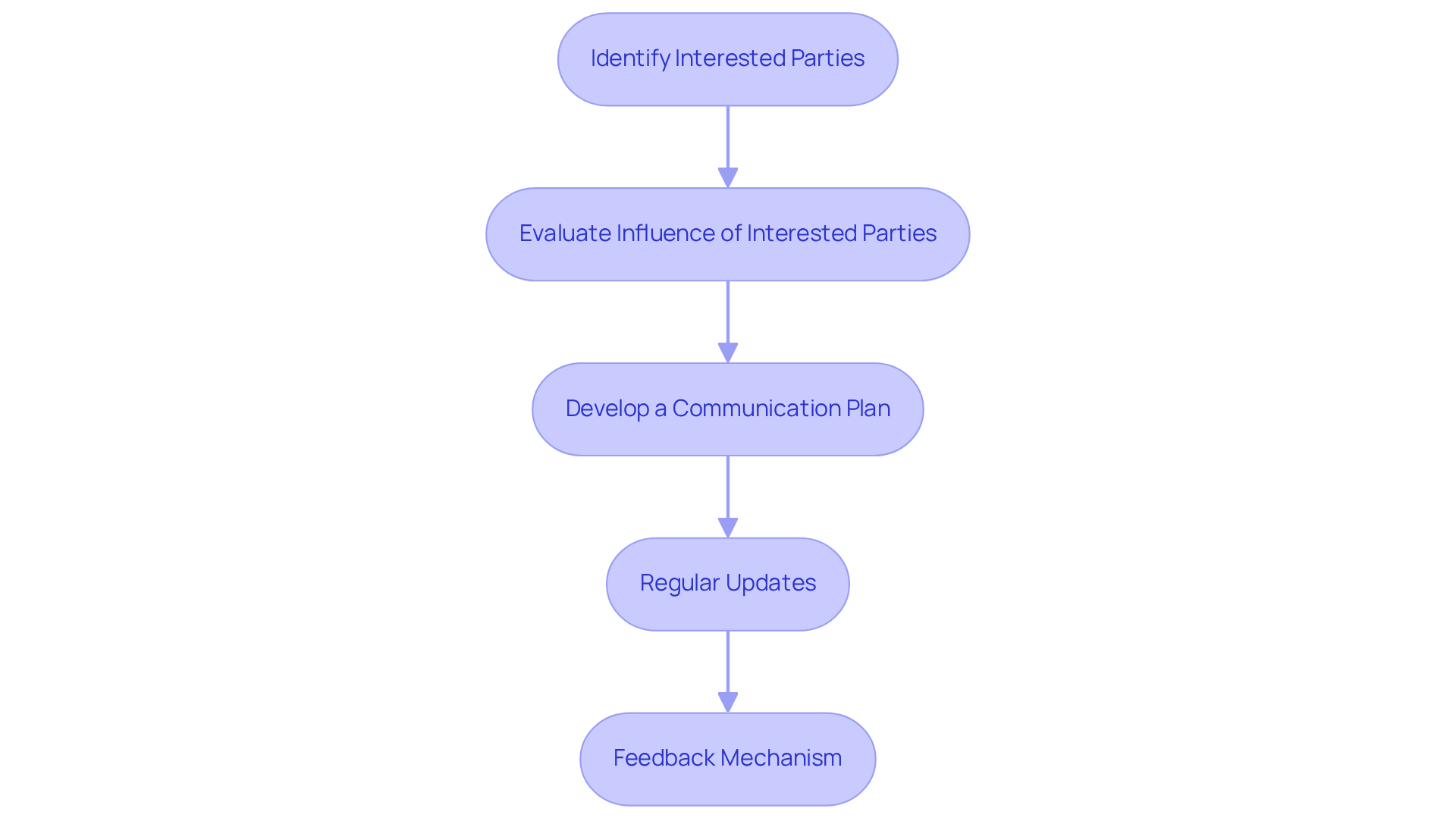
Clinical Research Project: Utilizing a Stakeholder Register for Effective Management
-
Identify Key Participants: In clinical research, key participants encompass a diverse range of groups, including patients, regulatory bodies, healthcare providers, and community representatives. Identifying these participants is essential for efficient management, as their engagement can greatly impact research results. Frameworks such as the Tufts-RAND 7Ps taxonomy and the PCORI engagement rubric can aid in recognizing these key participants, ensuring that all relevant voices are considered.
-
Document Roles and Responsibilities: Clearly defining the roles and responsibilities of each participant within the project framework is crucial. This documentation not only clarifies their contributions but also sets expectations, fostering accountability and enhancing collaboration among all parties involved. As R Edward Freeman indicates, any group or individual who can influence or be influenced by the attainment of the organization’s goals emphasizes the significance of comprehending their roles.
-
Engagement Strategies: Customized engagement approaches are essential for sustaining participant interest and involvement. For example, patients may benefit from regular updates on trial progress and outcomes, while regulatory bodies require detailed compliance reports to ensure adherence to guidelines. Involving interested parties through appropriate channels enhances transparency and trust. Wheeler et al. highlight that a genuinely responsive approach necessitates acknowledgment of various parties and the cultivation of trust with diverse interests.
-
Monitor Engagement: Utilizing a participant register allows project managers to track engagement levels effectively. Frequent evaluations of participant engagement allow modifications to strategies as required, ensuring that everyone involved stays informed and actively contributes throughout the research process. It is also crucial to address power imbalances and ensure that underrepresented voices are acknowledged, promoting inclusivity in the management of involved parties.
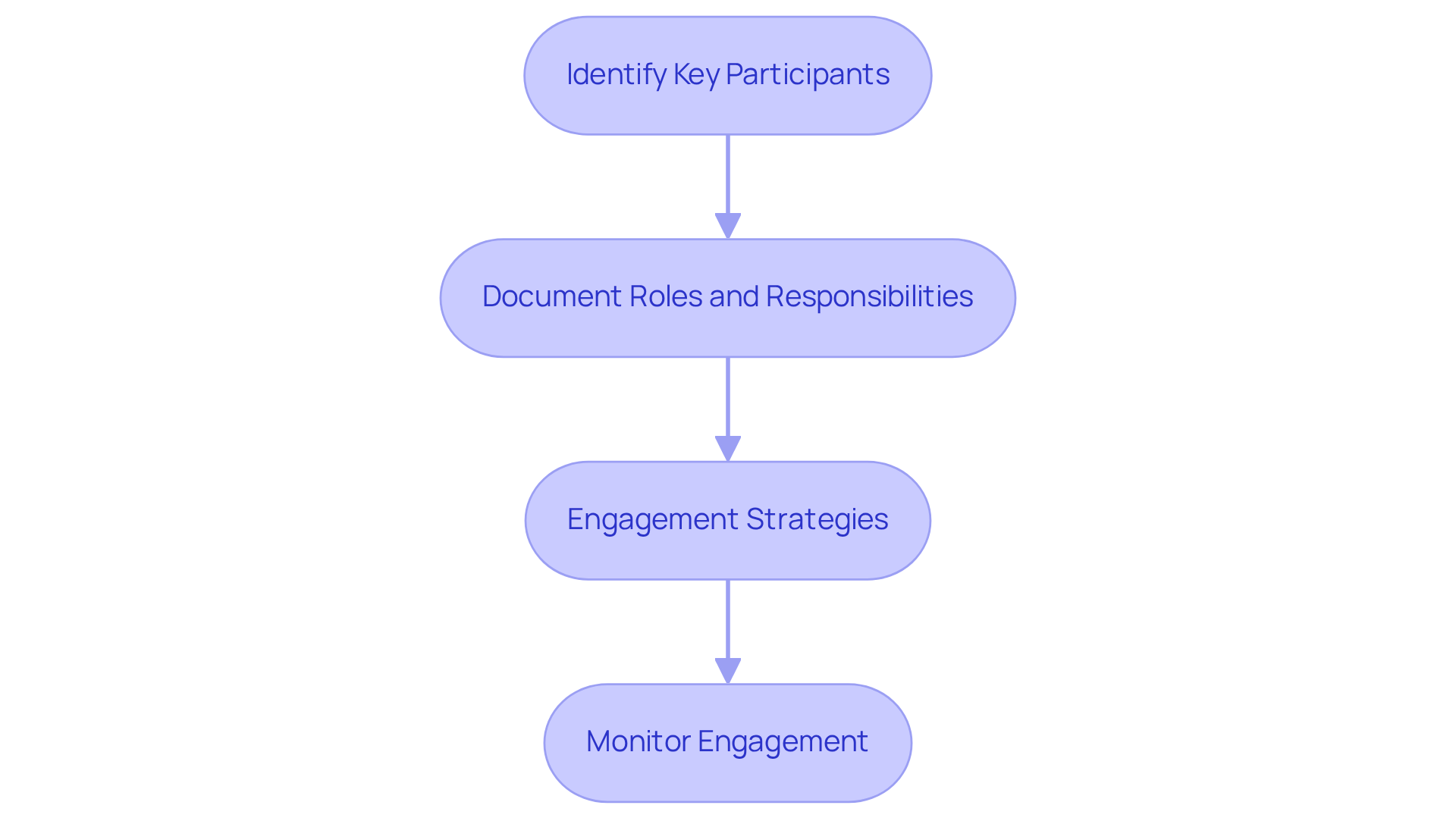
NASA: Leveraging Stakeholder Registers for Space Mission Success
-
Thorough Participant Mapping: NASA meticulously identifies all parties involved in a mission, ranging from engineers and scientists to government agencies and contractors. This thorough mapping ensures that every relevant party is included, minimizing the risk of oversight and fostering a collaborative environment. As pointed out by Nadege Minois, "In management of initiatives, communication is the linchpin that connects all elements together," emphasizing the significance of involving all participants in the process.
-
Regular Communication: Open lines of communication are a hallmark of NASA's approach. By offering regular updates and actively seeking input, NASA improves collaboration and keeps interested parties informed about developments. This practice not only fosters trust but also promotes participation from interested parties throughout the mission lifecycle. Effective communication is crucial in project management, serving as a catalyst for success, as emphasized by Minois.
-
Risk Management: The participant register serves as a critical tool for identifying potential risks related to examples of stakeholder register in project management. By understanding the dynamics and interests of various stakeholders, NASA can utilize examples of stakeholder register in project management to implement proactive management strategies that mitigate risks and address concerns before they escalate. Clear and consistent communication helps prevent misunderstandings, reduces conflicts, and improves efficiency in tasks.
-
Feedback Integration: Stakeholder feedback is integral to NASA's mission planning process. By integrating varied perspectives into decision-making, NASA guarantees that all viewpoints are taken into account, resulting in more informed and effective outcomes. This iterative feedback loop improves the overall quality of the mission and aligns objectives with the expectations of involved parties. As highlighted in a case study on communication barriers in multidisciplinary teams, addressing these barriers is crucial for project managers to ensure effective collaboration and project success.
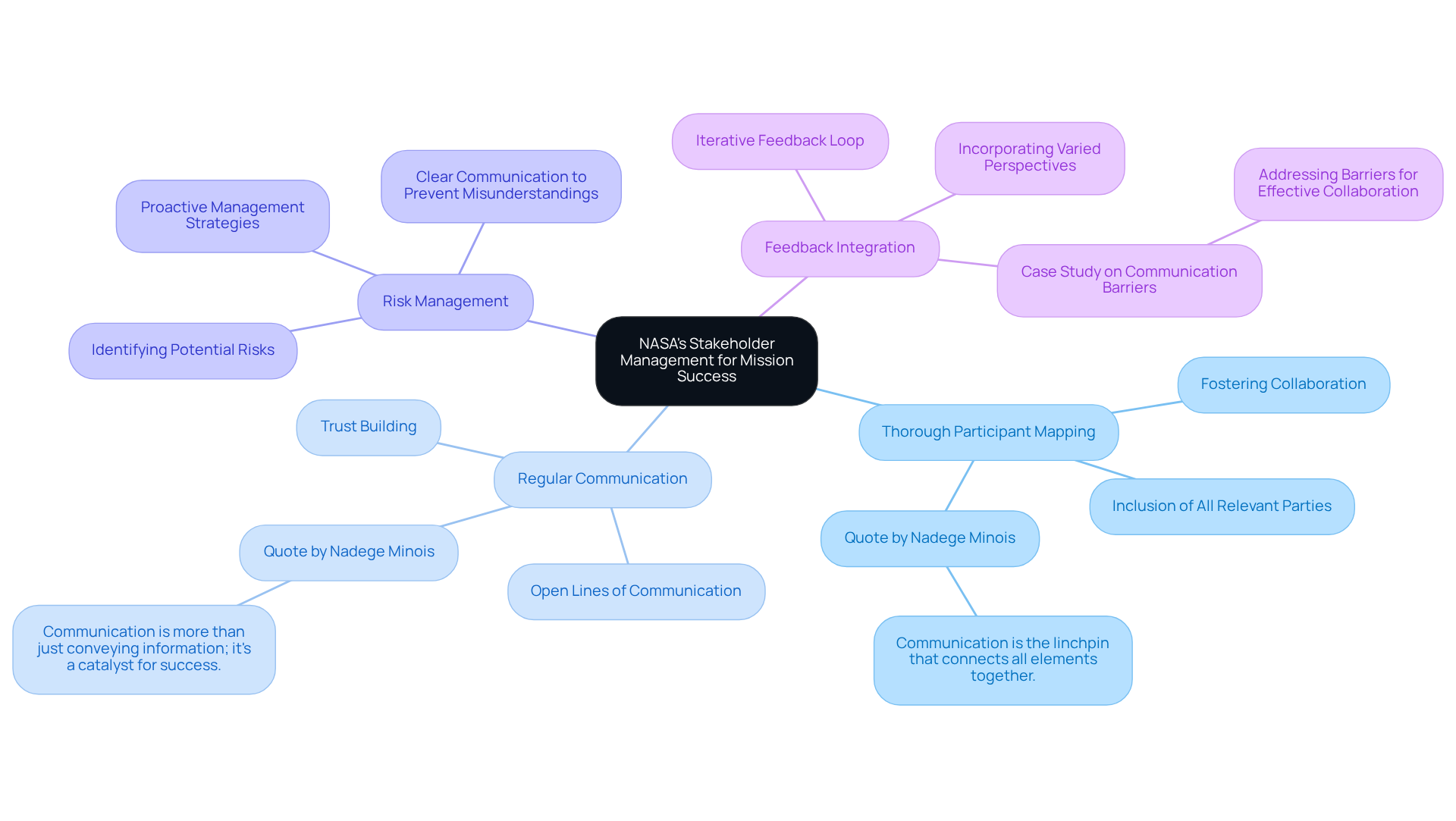
Walmart: Enhancing Stakeholder Communication Through a Comprehensive Register
-
Participant Identification: Walmart meticulously identifies a wide range of participants, including customers, suppliers, and community members, to ensure a holistic approach to engagement. This thorough identification process is essential for grasping the varied interests and influences that shape participant dynamics. Consequently, it facilitates a shortened decision-making cycle that can adapt to changing circumstances.
-
Engagement Platforms: The company utilizes a variety of communication platforms, such as social media, surveys, and direct outreach, to effectively connect with its diverse groups of interested parties. This multi-channel approach boosts engagement by addressing the distinct preferences of various parties, ensuring that messages are received and comprehended. Moreover, it enables real-time feedback that informs ongoing strategies.
-
Transparency Initiatives: Walmart's commitment to openness is clear in its participant register, which carefully records interactions and feedback. This initiative nurtures trust among interested parties and provides examples of stakeholder register in project management, showcasing the company's dedication to accountability and transparent communication. The continuous monitoring of participant interactions through the register also supports ongoing performance evaluations, operationalizing lessons learned to strengthen relationships over time.
-
Crisis Communication: In times of crisis, Walmart utilizes its contact list to swiftly disseminate critical information and updates. This proactive method guarantees that all parties stay informed, reducing uncertainty and strengthening confidence in the company's responsiveness and reliability. As Walmart's U.S. CEO John Furner stated, 'We'll continue to be on a journey. And what we're trying to do is to ensure every customer, every associate feels welcomed here in the shop and to feel like they belong.' This dedication to inclusivity is crucial during difficult periods, backed by real-time analytics that aid in evaluating the effectiveness of communication approaches.
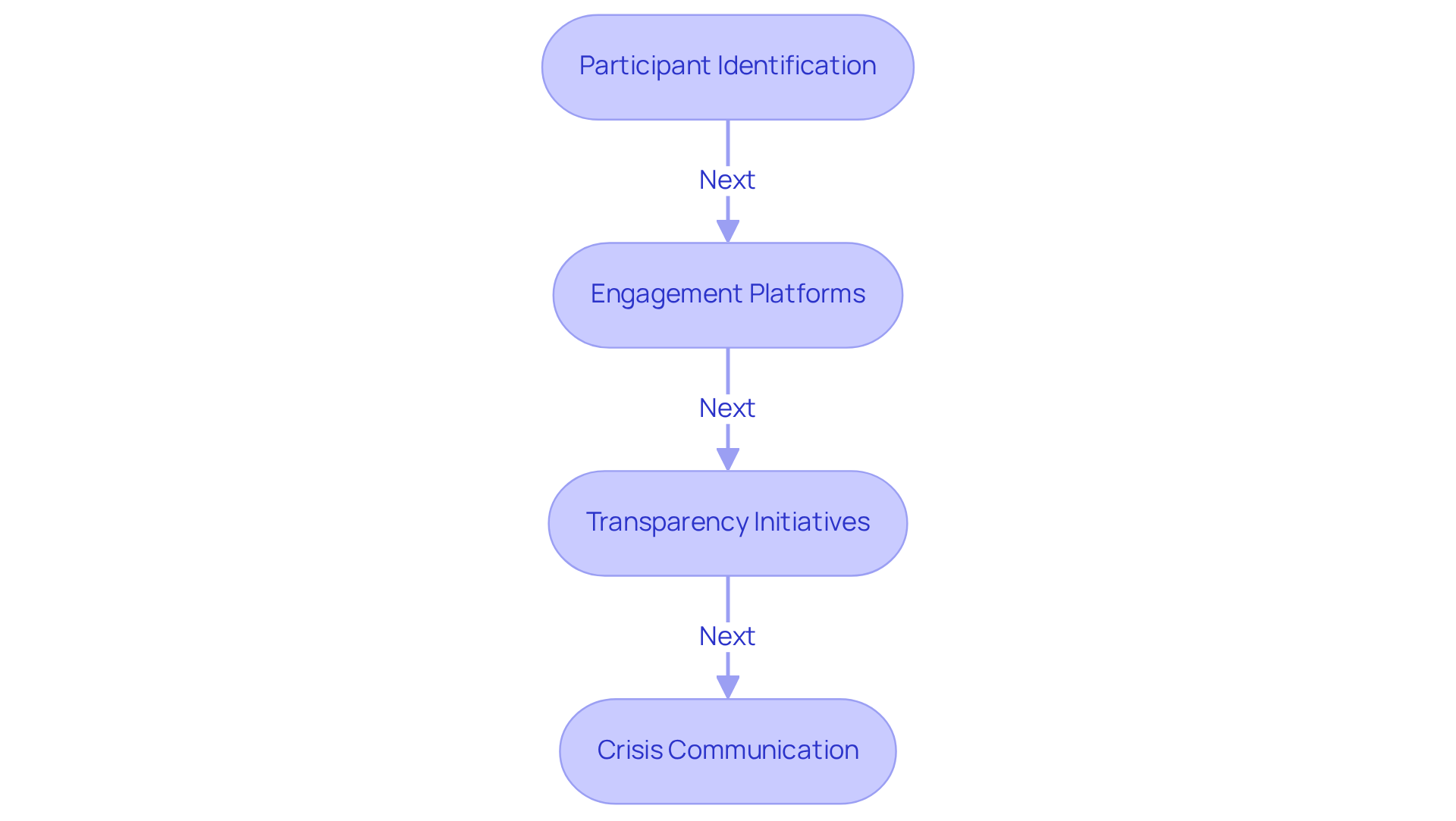
Asana: Managing Stakeholder Registers for Project Clarity and Engagement
Asana provides adjustable templates that serve as examples of stakeholder register in project management, streamlining the process for teams to efficiently record and manage participant information. Should you have any inquiries or require further details on enhancing your involvement approach, do not hesitate to contact SMB Turnaround at +1 (239) 428-9074.
The participant register is seamlessly integrated into management workflows, ensuring that participant engagement is a fundamental aspect of your overall strategy. For the latest updates and insights, we encourage you to reach out.
Asana facilitates real-time updates to the participant register, guaranteeing that all team members have access to the most current information. We invite you to explore how our solutions can elevate your project management efforts.
The platform's collaboration tools empower teams to effectively engage interested parties, fostering meaningful discussions and feedback. For more information, let's connect! Reach out to SMB Turnaround at +1 (239) 428-9074.
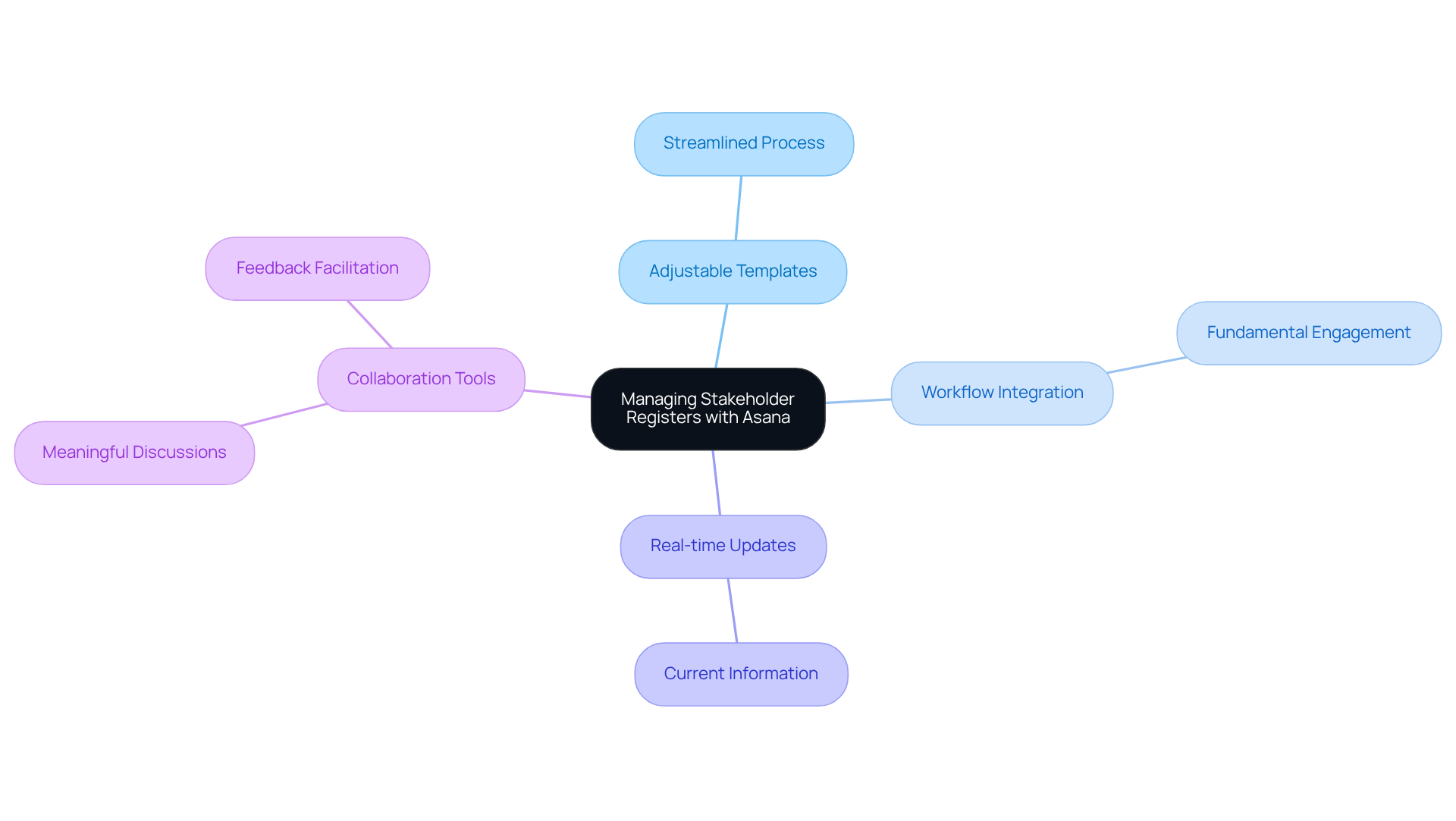
World Wildlife Fund: Aligning Stakeholder Interests with Conservation Goals
-
Participant Mapping: WWF conducts thorough participant mapping to identify all entities involved in conservation efforts, ranging from local communities to government agencies.
-
Engagement Strategies: The organization develops tailored engagement strategies for diverse interest groups, ensuring their concerns are integrated into conservation planning.
-
Feedback Mechanisms: WWF incorporates feedback from stakeholders into its projects, facilitating adaptive management and improved outcomes.
-
Collaborative Initiatives: By fostering collaboration among participants, WWF harmonizes varied interests towards common conservation goals.
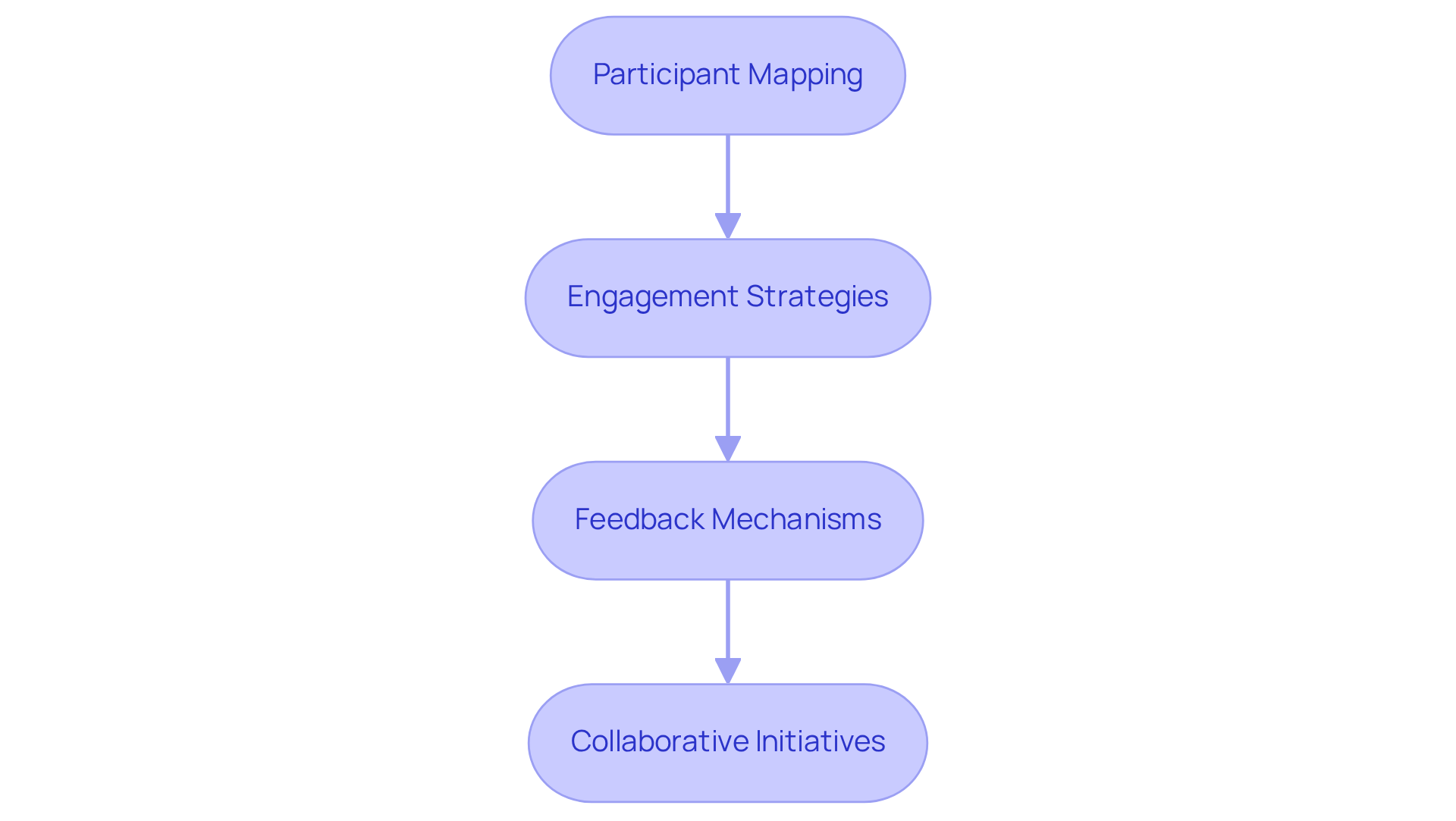
Google: Driving Innovation Through Strategic Stakeholder Register Practices
-
Varied Participant Recognition: Transform Your Small/Medium Business identifies a broad spectrum of contributors, including employees, customers, and industry partners. This approach drives innovation and ensures effective turnaround plans.
-
Collaborative Platforms: The company utilizes collaborative platforms to actively involve participants in the innovation process. This promotes idea sharing and feedback, which are essential for implementing lessons learned during the turnaround process.
-
Data-Driven Insights: Transform Your Small/Medium Business employs real-time analytics via its client dashboard. This enables a comprehensive understanding of the needs and preferences of involved parties, guiding innovation approaches and facilitating prompt decision-making to maintain business health.
-
Iterative Feedback Loops: The participant register serves as examples of stakeholder register in project management and is updated regularly based on input, allowing Transform Your Small/Medium Business to adapt its projects to meet evolving participant expectations. Continuous monitoring of business performance is crucial in this iterative process, which also aids in implementing lessons learned. This ensures that insights gained are effectively incorporated into future plans.
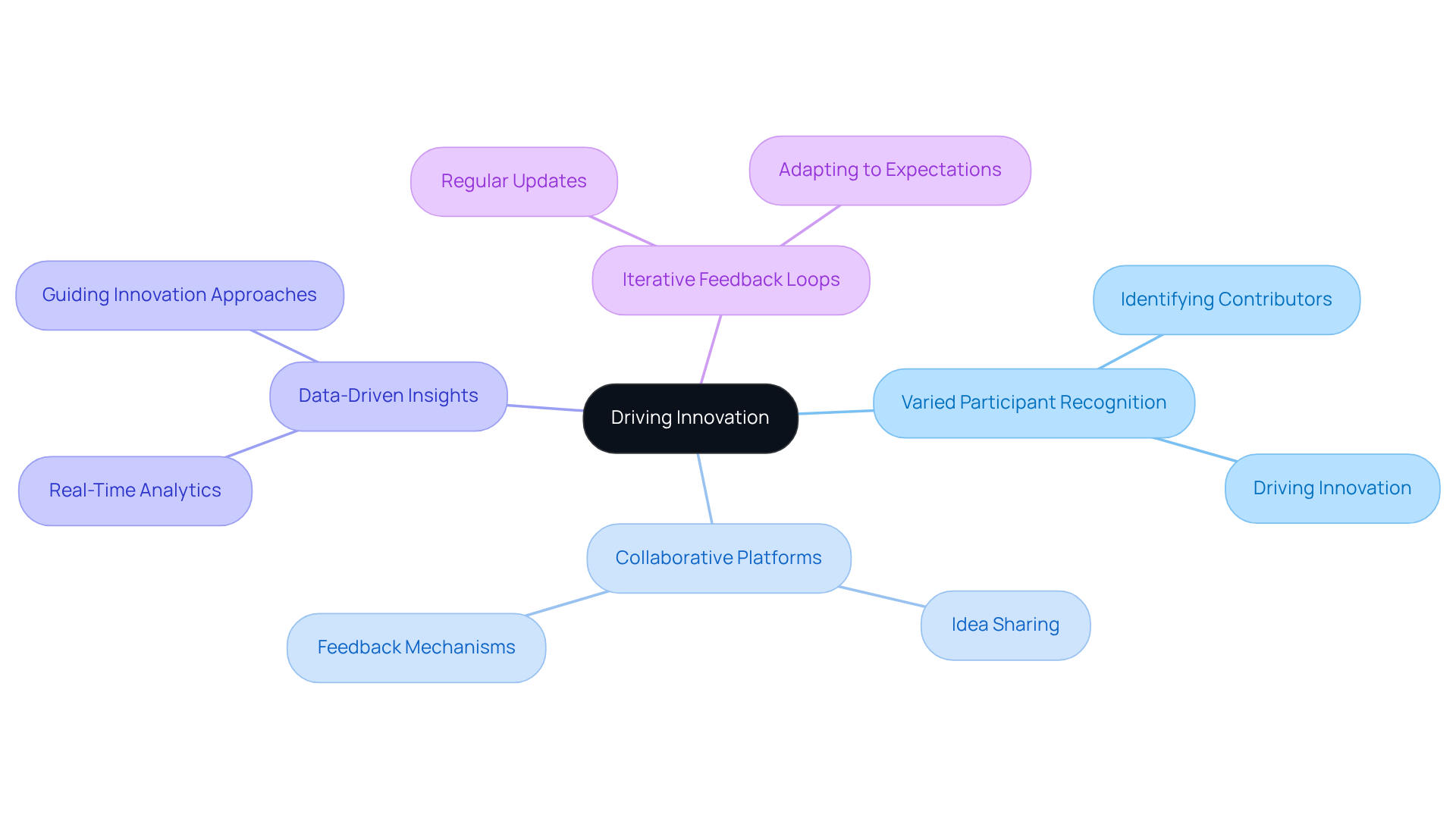
Mayo Clinic: Improving Patient Care Through Stakeholder Register Utilization
Patient-Centric Participant Mapping
Mayo Clinic identifies patients, families, and healthcare providers as vital participants in its care processes. This recognition underscores the clinic's commitment to a holistic approach to healthcare.
Engagement Strategies
The clinic implements engagement strategies that prioritize patient feedback and involvement in care decisions. This approach not only enhances patient satisfaction but also fosters a sense of ownership in their health journey.
Continuous Improvement
Utilizing a participant register, Mayo Clinic monitors patient experiences and outcomes. This data-driven approach informs continuous improvement efforts, ensuring that care evolves in response to patient needs.
Collaboration with Providers
Mayo Clinic actively promotes collaboration among healthcare providers. This ensures that patient care is both coordinated and comprehensive, ultimately leading to better health outcomes. By fostering these connections, the clinic enhances the overall patient experience.
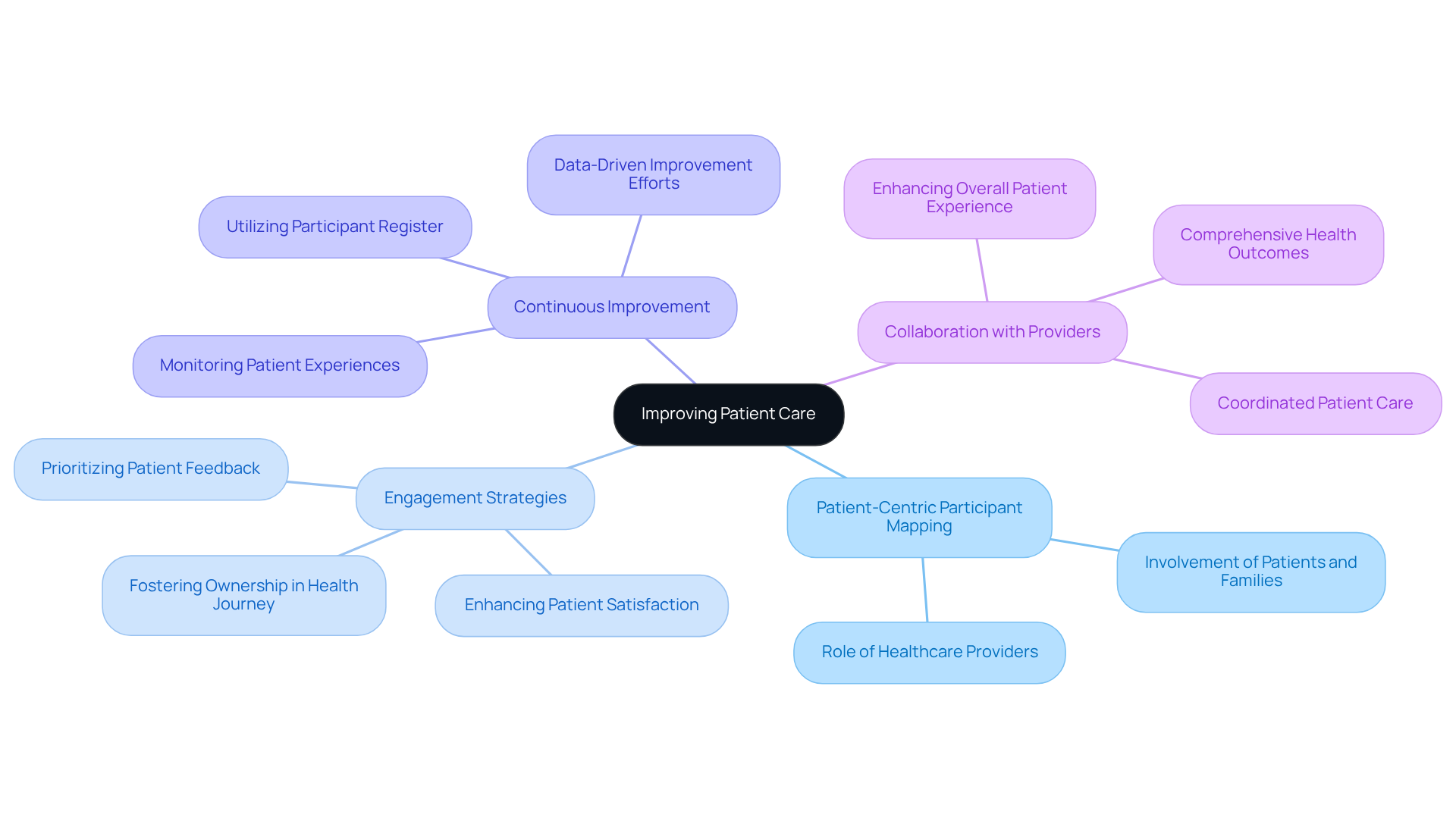
Bechtel: Navigating Complex Projects with a Stakeholder Register
Here are some examples of stakeholder register in project management.
-
Comprehensive Party Analysis: Transform Your Small/ Medium Business includes examples of stakeholder register in project management by conducting a thorough party analysis to identify all entities involved in an initiative, ranging from clients to regulatory bodies. This approach guarantees a complete understanding of the business landscape.
-
Involvement Strategies: The organization develops detailed involvement strategies that outline how and when participants will be informed throughout the initiative lifecycle. This coordination with strategic planning addresses potential vulnerabilities effectively.
-
Risk Mitigation: By maintaining a participant register, Transform Your Small/ Medium Business can identify examples of stakeholder register in project management to pinpoint potential risks associated with participant interactions. This proactive measure allows for the development of mitigation strategies that bolster key strengths.
-
Feedback Integration: Transform Your Small/ Medium Business actively solicits input from stakeholders to guide project decisions. This commitment ensures that all perspectives are considered, operationalizing lessons learned from the consultation process.

City of New York: Enhancing Public Engagement with a Stakeholder Register
-
Public Participant Identification: The City of New York actively identifies a diverse array of public participants, including residents, community organizations, and local businesses. This inclusive approach ensures that all voices are heard, fostering a sense of ownership and participation in local governance.
-
Engagement Approaches: To effectively connect with different interested groups, the city utilizes a variety of engagement approaches. These encompass public forums, targeted surveys, and social media outreach, which collectively improve participation and enable meaningful discussions among interested parties. Significantly, companies that interact with interested parties are 50% more likely to achieve their major objectives, highlighting the significance of these strategies.
-
Clarity and Responsibility: The participant register acts as an essential resource for recording examples of stakeholder register in project management efforts. By keeping comprehensive records, the city encourages openness and responsibility in its decision-making processes, providing examples of stakeholder register in project management and enabling participants to monitor how their contributions affect policy results. In fact, 85% of participants felt that engagement significantly influenced their perception of organizational transparency.
-
Feedback Mechanisms: The city prioritizes active solicitation of input from interested parties, utilizing various channels such as surveys and public hearings to gather insights that inform policy decisions. This commitment to including community viewpoints not only enhances public services but also bolsters trust in local government initiatives. As highlighted by Sarah Lee, "Stakeholder feedback is essential for understanding the potential impact and effectiveness of a policy, identifying areas for improvement, and fostering a sense of ownership and engagement among stakeholders.
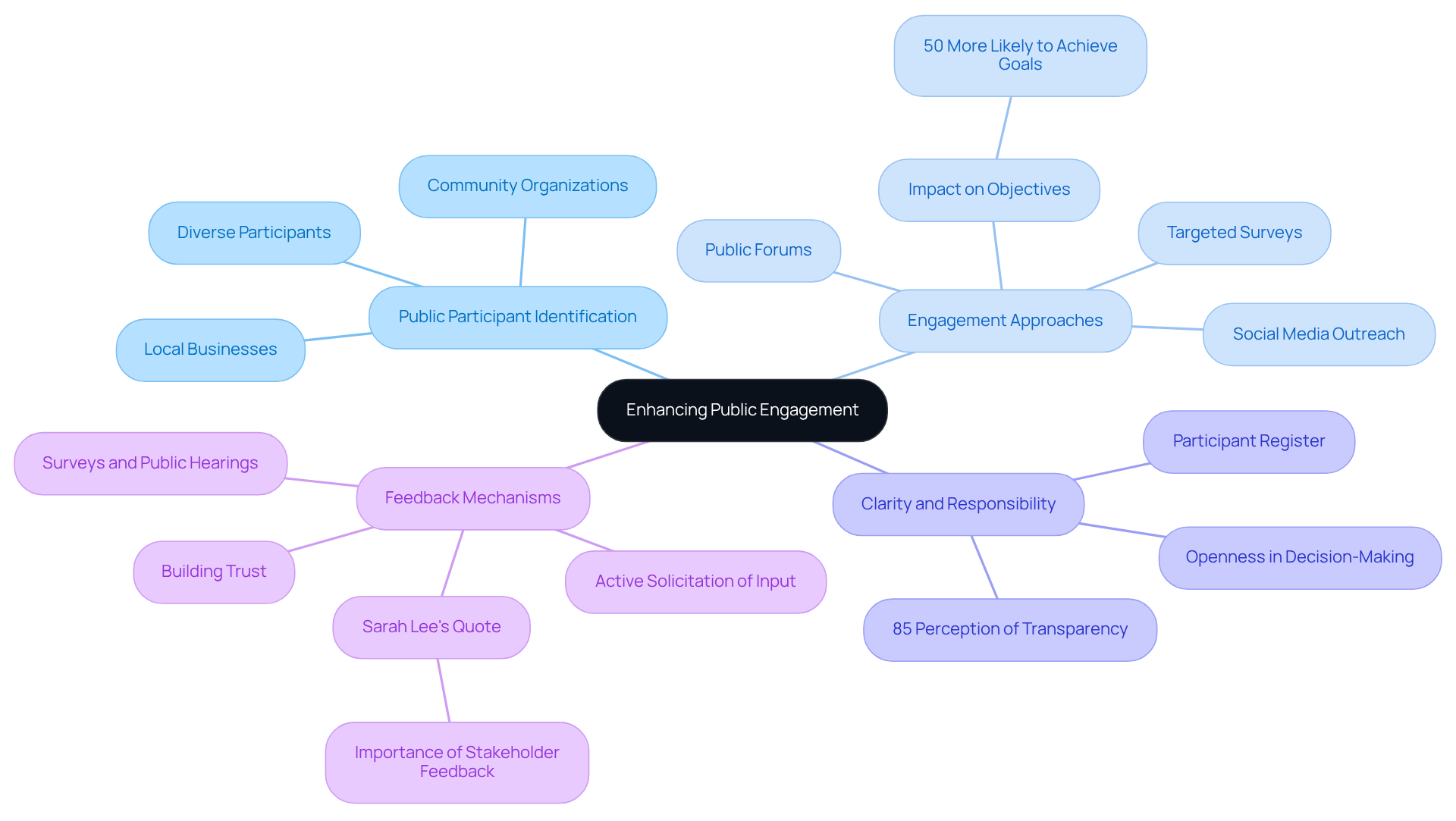
Conclusion
Effective stakeholder management is pivotal for the success of any project, as evidenced by the diverse examples highlighted in this article. From small businesses to large organizations like NASA and Walmart, the implementation of a stakeholder register serves as a foundational tool for fostering collaboration, transparency, and engagement among all parties involved. By recognizing and addressing the unique needs and influences of stakeholders, organizations can significantly enhance their operational effectiveness and project outcomes.
The article outlines essential strategies for creating and maintaining a stakeholder register, including:
- Identifying interested parties
- Evaluating their influence
- Developing tailored communication plans
- Establishing feedback mechanisms
Each example demonstrates how these practices not only improve stakeholder relationships but also contribute to achieving specific organizational goals, whether in project management, clinical research, or public engagement.
Ultimately, the importance of a well-structured stakeholder register cannot be overstated. It serves as a blueprint for effective communication and engagement, ensuring that all voices are heard and valued. Organizations are encouraged to adopt these practices, not just as a formality, but as a commitment to fostering inclusive and responsive environments. By doing so, they can drive innovation, enhance collaboration, and ultimately achieve greater success in their endeavors.
Frequently Asked Questions
What is the first step in implementing a stakeholder register for small and medium businesses?
The first step is to identify interested parties by compiling a comprehensive list that includes employees, customers, suppliers, and investors. This recognition is essential for successful engagement and building robust relationships.
How do you evaluate the influence of interested parties?
You assess the impact and interest levels of each participant, which helps to highlight involvement initiatives based on their influence. This targeted approach allows businesses to focus on those who can significantly affect outcomes.
What should a communication plan for interested parties include?
A communication plan should be tailored for each group of interested parties, ensuring that the information shared is relevant and timely to sustain engagement and nurture a sense of partnership.
Why are regular updates important for interested parties?
Regular updates are crucial as they keep interested parties informed about critical business developments, especially during crises. This consistency enhances trust and transparency, improving confidence in management decisions.
What role does a feedback mechanism play in stakeholder engagement?
A feedback mechanism establishes channels for participants to provide input, which fortifies relationships and reveals opportunities for operational enhancements, ultimately driving better business performance.
Who are considered key participants in clinical research?
Key participants in clinical research include patients, regulatory bodies, healthcare providers, and community representatives. Their engagement is essential for efficient management and impactful research results.
Why is documenting roles and responsibilities important in a project framework?
Documenting roles and responsibilities clarifies contributions and sets expectations, fostering accountability and enhancing collaboration among all parties involved.
How can engagement strategies be customized for different participants?
Engagement strategies can be customized by providing specific information relevant to each group, such as regular updates for patients and detailed compliance reports for regulatory bodies, to enhance transparency and trust.
What is the purpose of monitoring engagement in a project?
Monitoring engagement allows project managers to track involvement levels and make necessary adjustments to strategies, ensuring that all participants remain informed and actively contribute.
How does NASA utilize stakeholder registers for space missions?
NASA meticulously maps all parties involved in a mission to ensure comprehensive inclusion, fosters collaboration through regular communication, manages risks proactively, and integrates stakeholder feedback into decision-making.
What is the significance of effective communication in project management?
Effective communication is crucial as it connects all elements of a project, fosters trust, promotes participation, and serves as a catalyst for success, as highlighted in NASA's approach.




